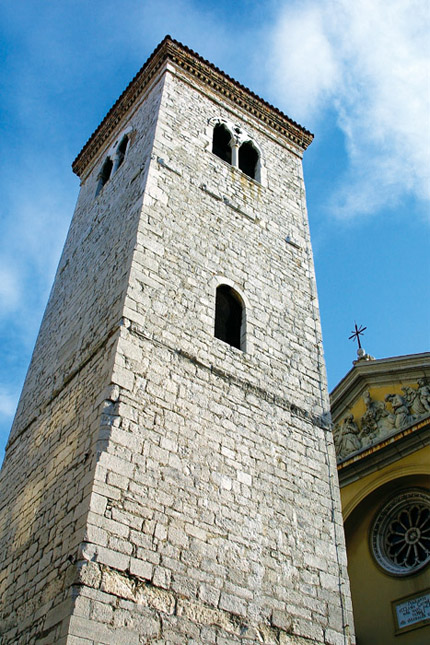
The Church of the Assumption is located along the Roman decumanus, close to the eastern edge of the former city walls and close to the first port on the Rječina river. In the 1st century the public city thermal complex was located here, and the new one was built at the same site at the beginning of the 4th century. Archaeological research has discovered the area of the hypocaust, a hollow floor space used for heating the air in the baths, which today can be found under the foundations of the nearby buildings. During the 5th and 6th centuries, a part of the baths was readapted into an early Christian cult area. The Late Antique mosaics close to the church’s bell tower and along its front facade indicate that this was the place where the forum, the city square with monumental public buildings used to be. Above the entrance to the bell tower, popularly known as the “Leaning Tower”, thanks to its visible inclination, the year 1377 is engraved, while the church was first mentioned in documents only in the 15th century. Since that time it has systematically spread, in terms of architecture, towards the east and the west, thus developing from a small one-naved church to a monumental baroque three-naved building. The front Classicist facade dates back to 1842 and has a Renaissance rosette and a baroque portal, while the composition in the gable is the work of the Viennese masters from the 1890s. The most important church renovation was initiated by the patrician Orlando family in the period from 1716 until 1726, bringing masters from Ljubljana to build the new apse and the altar. The church’s interior is decorated with the baroque sculptures created by Jacopo Contiero, Giovanni and Leonardo Paccassi, Pasuale Lazzarini, Antonio Michelazzi, Sebastian Petruzzi and with stucco works created by Giulio Quario. The altarpieces are mainly the works of Ljubljana's painter Valentin Metzinger and Ivan Franjo Gladić. The gravestones exhibited around the church belong to the members of brotherhoods, patrician families and priests who were buried in the church up until 1901.




